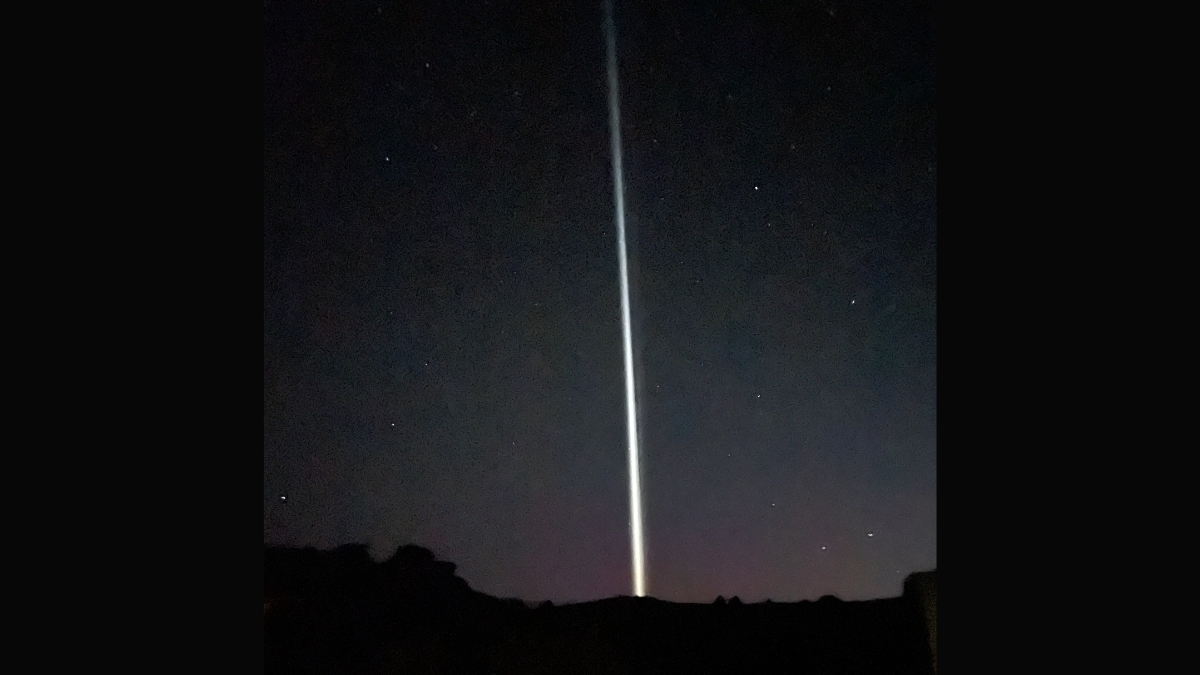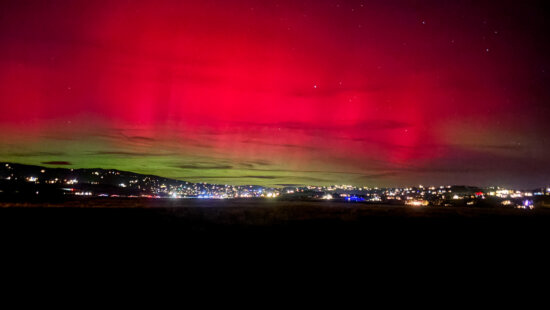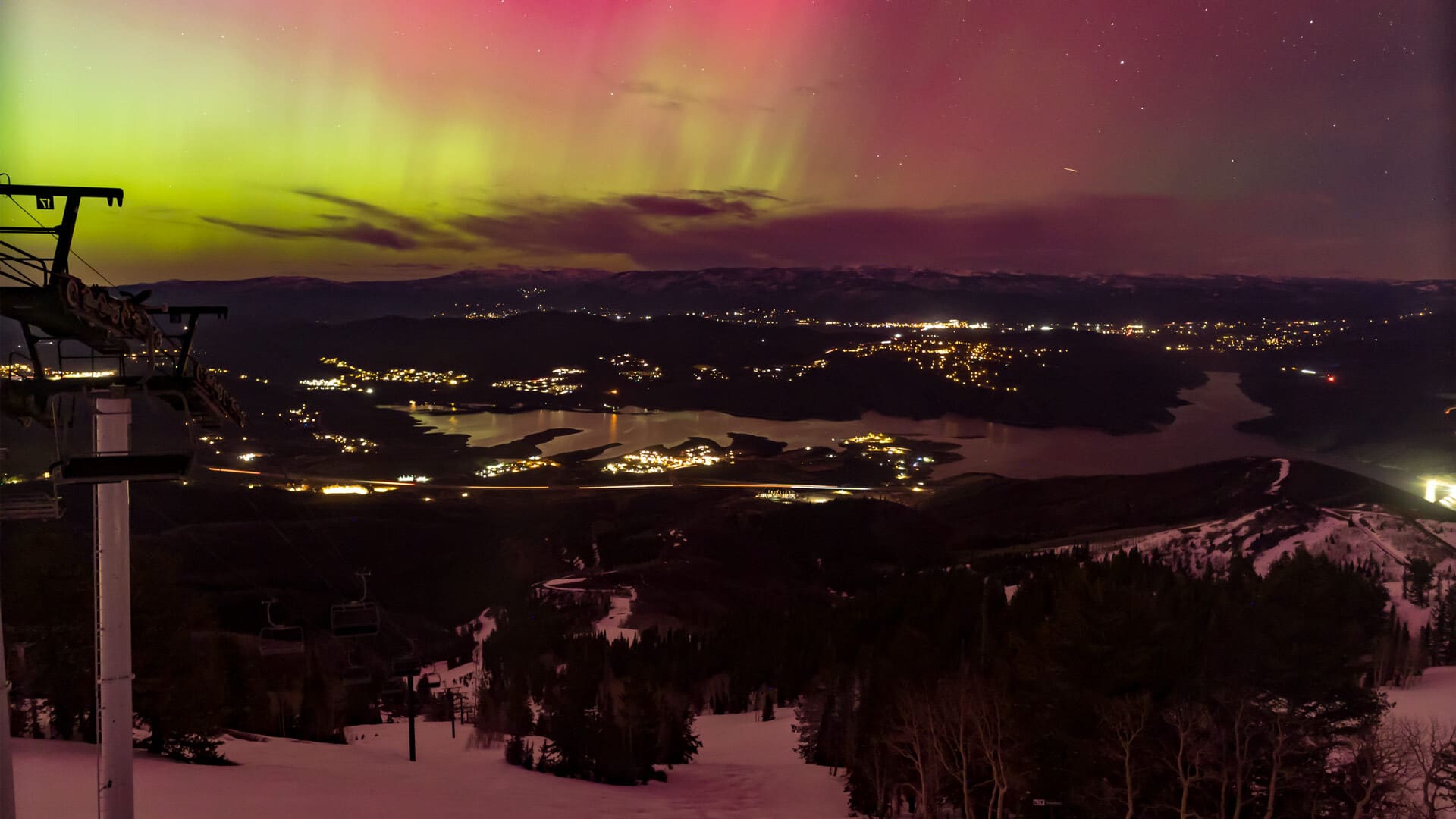Weather
Mystery light beam in Utah sky sparks speculation: Chinese rocket or ‘STEVE’?

Is it STEVE or a Chinese Rocket?? Mystery light beam captured from Vernal, Utah on Friday, May 16, 2025. Photo: Carly Driscoll
UTAH — A bright streak of light illuminating Utah’s night sky on Friday, May 16, has sparked widespread speculation about its origins, with experts pointing to two primary theories and PowderBuoy claiming they were testing a new “bat” signal for incoming snow.
Did you get a photo or video of the light beam? Share with tips@townlift.com for a chance to be featured
Theory One: Chinese rocket plume
The mysterious beam coincided with the launch of a methane-powered rocket developed by China’s LandSpace Technology. The Zhuque-2E Y2 carrier rocket blasted off at 12:12 p.m. GMT from the Jiuquan Satellite Launch Center in northwest China, successfully placing six satellites into orbit.
KSL Meteorologist Matt Johnson identified the phenomenon as the rocket’s methane plume illuminated by sunlight.
“It was a rocket! The ZhuQue-2E to be exact, and it had six Tianyi satellites onboard,” Johnson wrote on social media.
The light beam was widely visible across the Southwest, with numerous sightings reported in Arizona, New Mexico, and Colorado, according to social media posts compiled by the Arizona Republic.
View this post on Instagram
Theory Two: STEVE, Strong Thermal Emission Velocity Enhancement
Mike Lewinski, who photographed the display from Crestone, Colorado, described the moment to SpaceWeather.com: “The aurora was rippling low on the northern horizon when suddenly a bright streak of light, reminiscent of a rocket re-entry, appeared high in the sky and flowed down to the horizon.”
The timing coincided with an unexpected G2-class geomagnetic storm that occurred during the early hours of May 17, sparked by a coronal mass ejection (CME) that was originally expected to miss Earth.
Some observers initially speculated the light might be “STEVE” (Strong Thermal Emission Velocity Enhancement), an aurora-like phenomenon that appears as a purple and green light ribbon in the night sky.
Johnson dismissed this theory, noting: “There was speculation that it was a ‘S.T.E.V.E’, this is false. STEVE is often seen as a streak of purplish beam of light in the night sky that typically runs parallel to the Aurora line. Last night’s streak was perpendicular.”
SpaceWeather.com also rejected the STEVE theory: “This plume was not an aurora, and it was not STEVE. We believe it is related to a rocket launch in China.” The site suggested the white streak “may have been a de-orbit burn, or perhaps a circularization burn for the deploying satellites.”
LandSpace, founded in 2015, became the world’s first company to launch a methane-liquid oxygen rocket in July 2023, ahead of U.S. rivals including Elon Musk’s SpaceX and Jeff Bezos’ Blue Origin. The “methalox” technology “offers several advantages over traditional rocket fuels like kerosene and hydrogen. Methane is more easily stored, burns cleaner, and can be produced on Mars,” according to SpaceWeather.com.
So what illuminated Utah’s night sky on Friday? Was it the methane plume of a groundbreaking Chinese rocket or a rare atmospheric phenomenon? If you witnessed the celestial spectacle, you’re part of a moment that briefly united sky-watchers across the region in collective wonder.
Remember those Monoliths?
BREAKING: Mysterious Monolith in Southern Utah Disappears




















